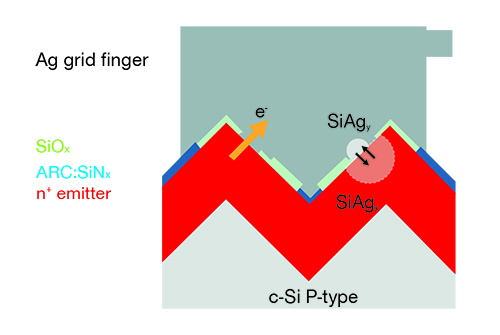1. SE Laser Doping Process
Purpose: The Selective Emitter (SE) laser doping process enhances the emitter layer on an N-type TOPCon cell to reduce contact resistance and improve conversion efficiency.
Mechanism: Laser energy melts the silicon surface, enabling boron (B) atoms in the borosilicate glass to diffuse rapidly into the silicon, creating a heavily doped layer. High doping at contact points reduces contact resistance, while lighter doping elsewhere minimizes recombination losses, ultimately improving efficiency by 0.2%-0.4%.
2. Formation of Tunnel Oxide and Polycrystalline Silicon Layers
Purpose: These layers on the silicon wafer’s backside create a passivated contact structure, crucial for reducing recombination and enhancing efficiency.
Method: The industry-preferred Plasma Enhanced Chemical Vapor Deposition (PECVD) method deposits a 1-2nm silicon oxide film and a 100-150nm doped amorphous silicon layer, which crystallizes during annealing to form a polycrystalline layer. PECVD offers high deposition speed, reduced contamination, and low cost, making it an effective choice for mass production.
3. Anti-Reflective Coating (ARC)
Purpose: The multi-layer dielectric structure (SiOx/SiONx/SiNx) reduces optical losses and enhances light absorption, boosting photocurrent and efficiency.
Additional Benefits: The ARC provides surface passivation by reducing surface recombination rates, extending cell lifespan, and protecting prior-deposited layers (such as alumina on the front) from damage and contamination.
4. Laser-Induced Firing (LIF)
Purpose: LIF is used post-screen printing to optimize the contact between the metal paste and silicon. This process enhances the ohmic contact and reduces contact resistance, improving electrical output.

Impact: LIF has been shown to increase conversion efficiency by 0.2% or more, making it a valuable addition to TOPCon manufacturing.
These core process steps highlight the advanced manufacturing techniques in TOPCon technology, allowing for higher efficiency and enhanced stability in solar cell performance.







